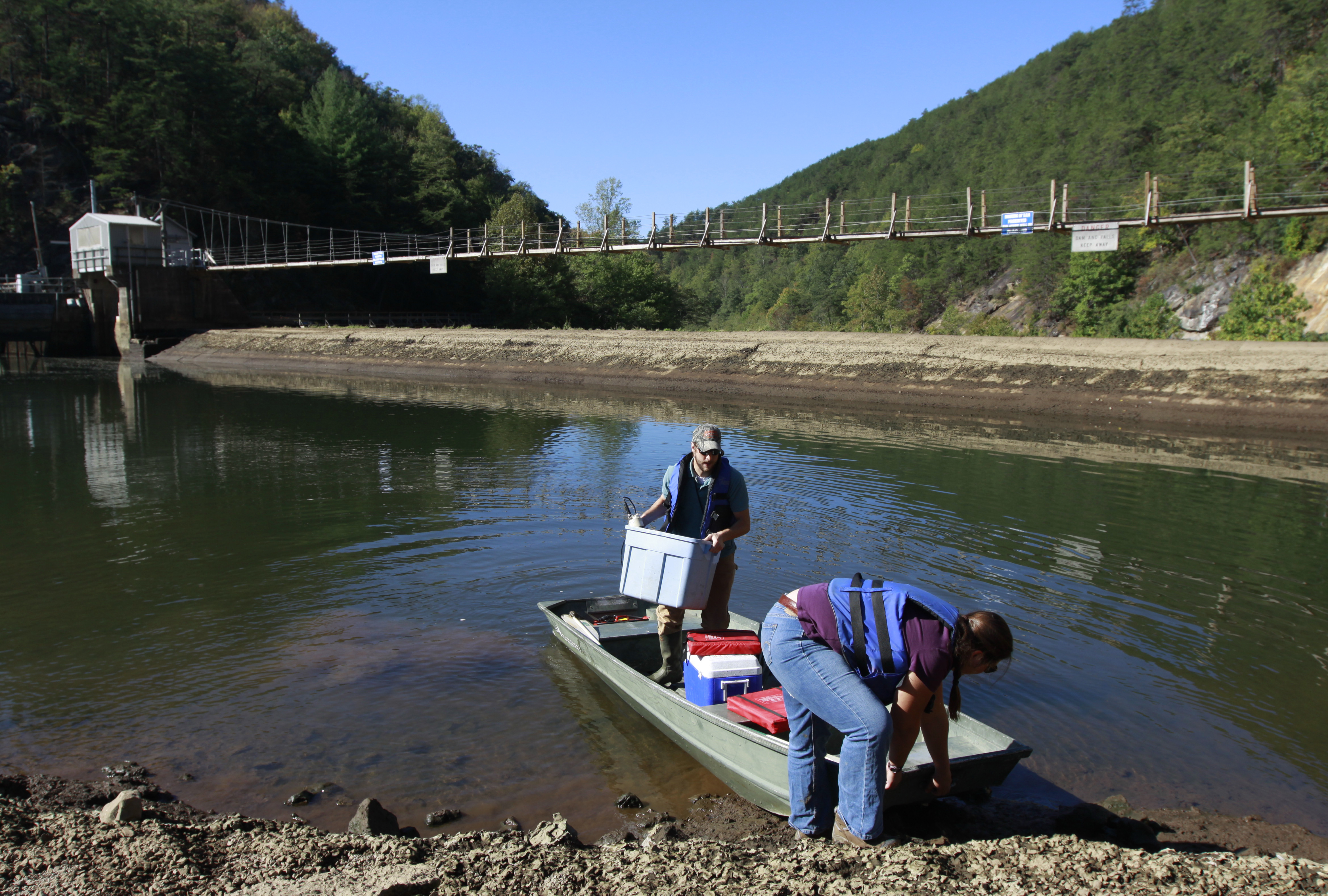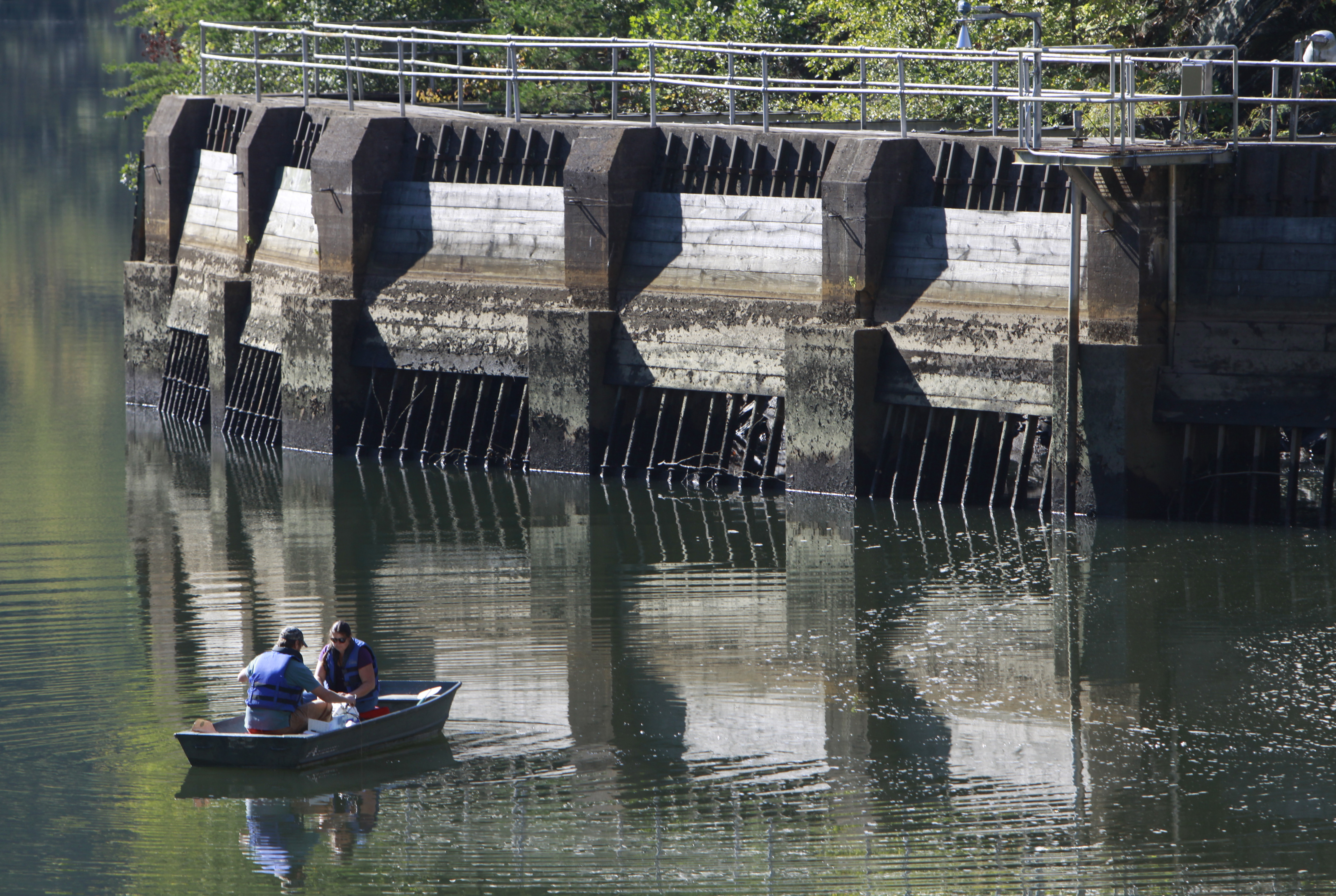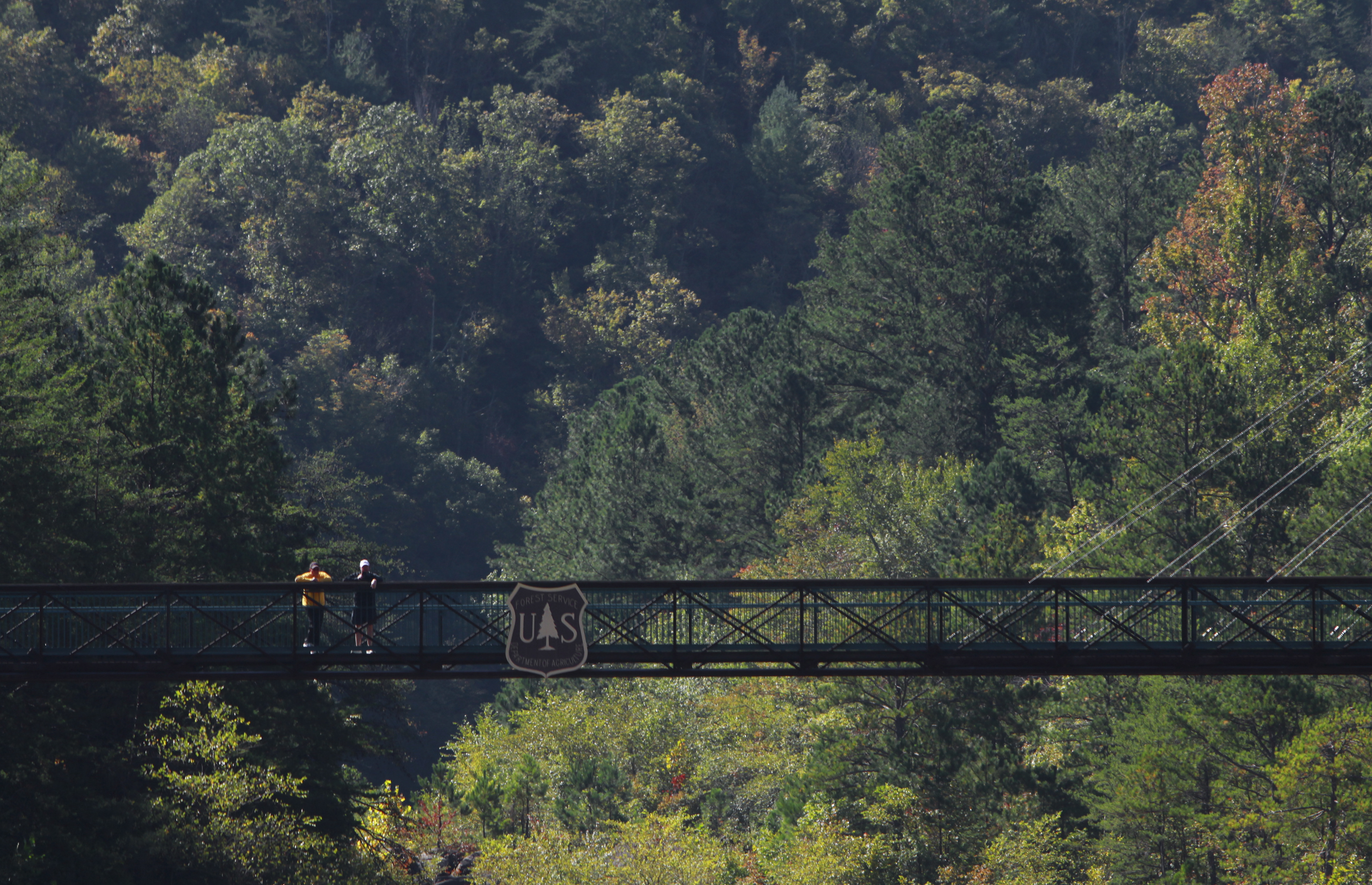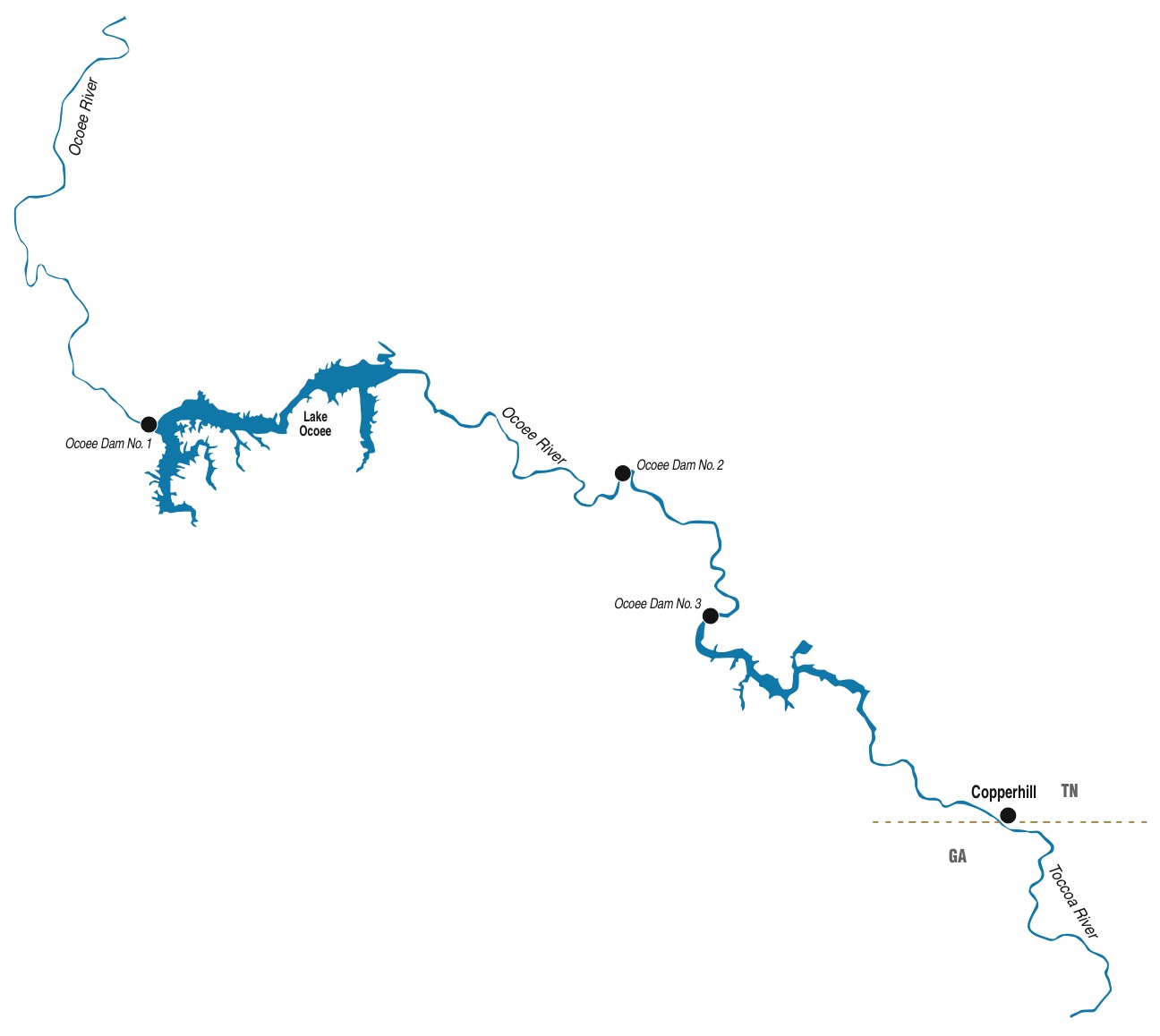BY THE NUMBERS• 93: Miles of river, first as the Toccoa River for 56 miles in Georgia, then as the Ocoee in Tennessee. It flows into the Hiwassee River, which runs to the Tennessee River.• 11,000: Pounds of acid-making metals that once flowed into the Ocoee each day• $100 million: Spent on cleaning up 10,000 acres on the copper mine site near the river
COPPER BASIN, Tenn. - A decade ago, the Ocoee River was dead - devoid of any insect or fish life that normally signals clean water.
The river bore the legacy of more than a hundred years of acid runoff from the massive copper mine that gave Copperhill its name.
Now, after 10 years of environmental cleanup that included building two massive water treatment plants on tributaries of the Ocoee, the river that gained fame as an Olympic whitewater course not only is meeting most water quality standards, but also is alive again.
"That's amazing," said Craig Zeller, the U.S. Environmental Protection Agency's project manager for the Copper Basin river cleanup.
"In the 1960s, the astronauts orbiting in space could see three things on the Earth: Mount Everest, the Great Wall of China and the 50-square-mile red desert that was Copperhill," Zeller said. "And all the acid runoff from that was going into two creeks that ran to the Ocoee River."
Late last month, the EPA signed what's called a Record of Decision stating that the river cleanup largely is complete. But monitoring by the site's current owner, Glenn Springs Holdings Inc., will continue for decades to come, with EPA reviews every five years.
Mike Anderson is president of Glenn Springs, a subsidiary of Occidental Petroleum, which came to own the site years after mining stopped in the 1980s. He called the work and the agreement monumental.
"In my mind it's the gold standard" for how state and federal agencies and a company should work together. The cleanup was designed to be an alternative to a stigmatized Superfund designation.
"There's been a major restoration effort here with measurable results," he said.
"It's not an easy process, but in this case there have been a lot of committed people who deserve a hats-off."
The moonscape history
The "Great Eastern Desert" astronauts saw from space had been barren and red since the mid-1800s.
By the time the time people could see it from orbit, the smelting had stopped and vegetation had been creeping back along the far edges for about 30 years. Today, the desert moonscape is gone and planted pines provide a green cover to the landscape.
The river turnaround didn't materialize until 2002, when a water treatment plant was built on Davis Mill Creek.
The idea was to add lime to the acidic and metals-filled water flowing into the plant, let the metals settle out, then pump the clean water back into the creek to flow to the river.
It wasn't new technology, but it had never been applied at the copper mining site where 11,000 pounds of metals a day were still being discharged to the creeks and the river.
The treatment immediately reduced the amount of metals and acid flowing to the Ocoee River by 74 percent.
But Zeller, whose full-time job with EPA was overseeing the Ocoee cleanup until the Kingston ash spill occurred in 2008, calls that first result "just the low-hanging fruit."
In 2005, a second water treatment plant was built on the second metals-filled tributary, Little Potato Creek.
"That got us to an 87 percent reduction," Zeller said.
With more work at some individual runoff sites around the river, regulators now believe they have reduced the pollution reaching the river by 98 to 99 percent.
"It's been 10 years of work for $100 million on 10,000 acres," Zeller said.
Now the Ocoee, which originates as the Toccoa River from pristine springs and streams in the North Georgia mountains, is again supporting life in Tennessee.
"The fish are coming back," Zeller said.
Cost and benefit
A few days ago, environmental specialist Jessica Rader and biologist Chip Walton did a monthly monitoring run on the river for the Tennessee Department of Environment and Conservation.
"The samples Jessica and Chip were collecting are helping document the changes that have occurred in the Ocoee River," said TDEC spokeswoman Tisha Calabrese-Benton.
The river's recovery suffered a hiccup in 2008 when the Tennessee Valley Authority sluiced a three-foot wall of mud buildup from behind its upper Ocoee dam, then washed it through with a strong release of water from the upstream Blue Ridge reservoir.
TVA operates three Ocoee dams and a flume that are listed on the National Register of Historic Places. The dams and flume still generate electricity.
Since then, water samples collected by TDEC show the river again has rebounded, and the state has worked with TVA to ensure that water levels remain more consistent in the upper and lower reaches of the river.
Last month's Record of Decision was the Ocoee's third time to make history. First was as the red and dead ditch that carried copper mine tailings.
Second was the downstream site of Olympic whitewater rafting in 1996. EPA had said the upstream acid runoff didn't present health problems for rafters, just for river insects and fish.
Now, with that natural life returning, some think the Ocoee region can cash in on more than just rafting season.
Elois Ledford, president of the Copper Basin Chamber of Commerce, said tourism is what Polk County depends on.
"I think recreational fishing and water play in the area will be better due to the cleaner water."




